
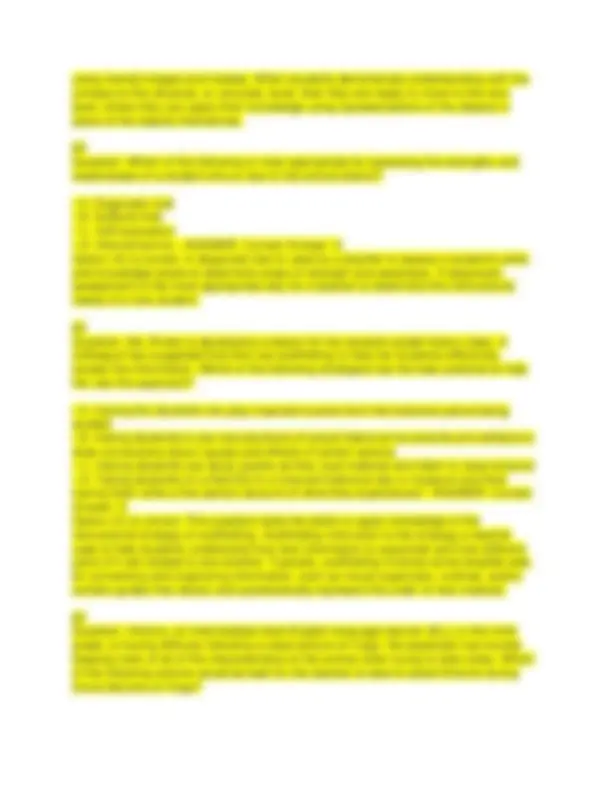
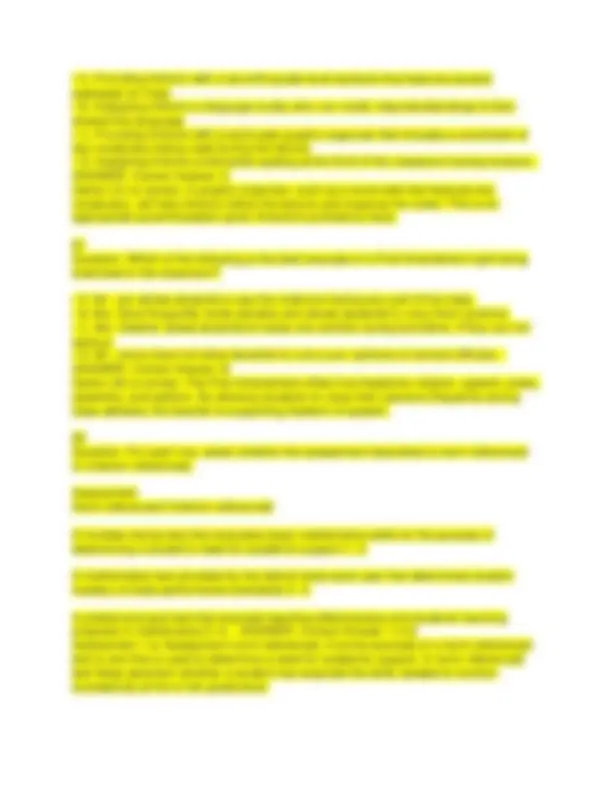
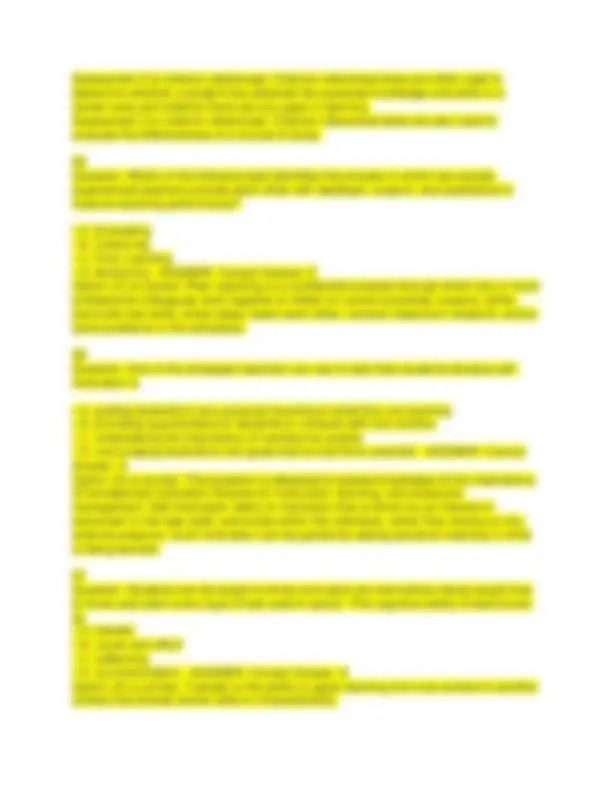
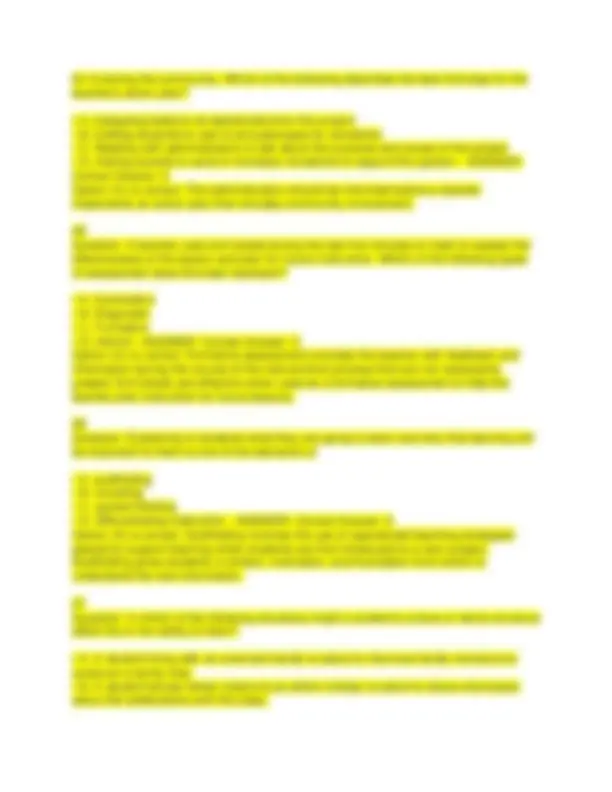
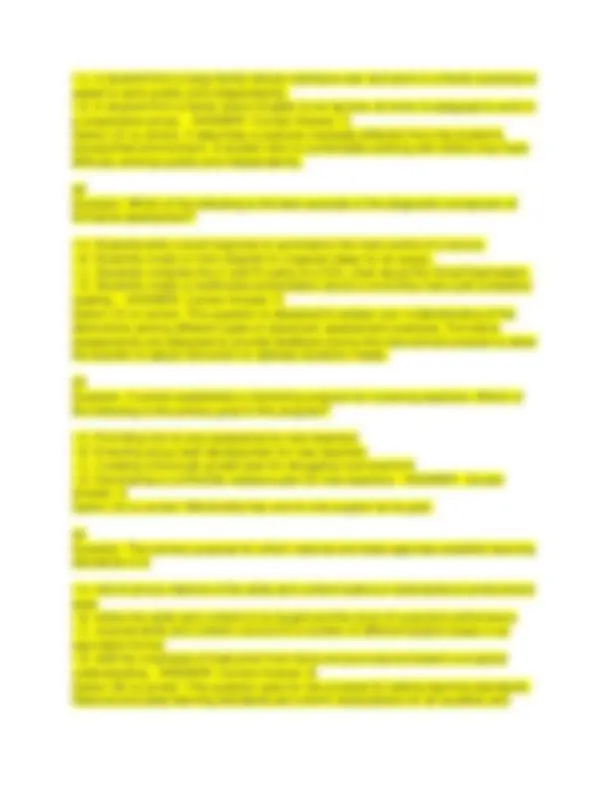
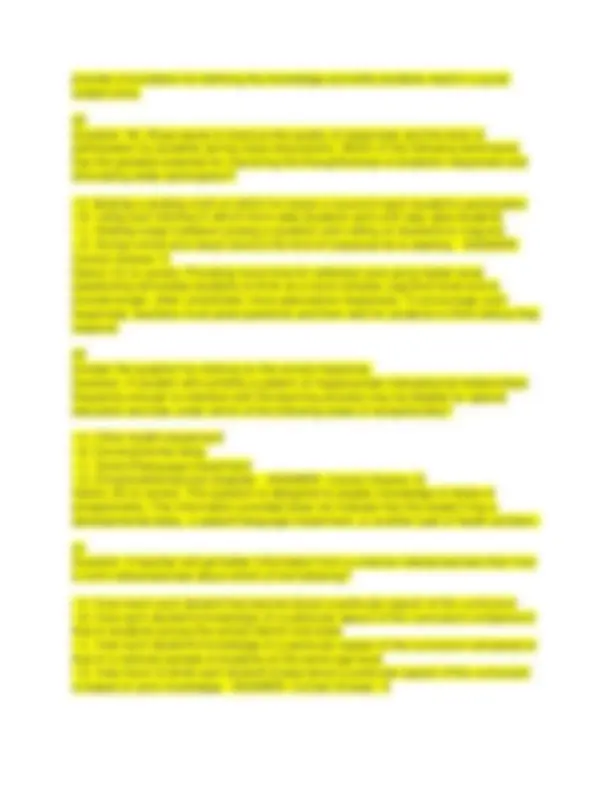
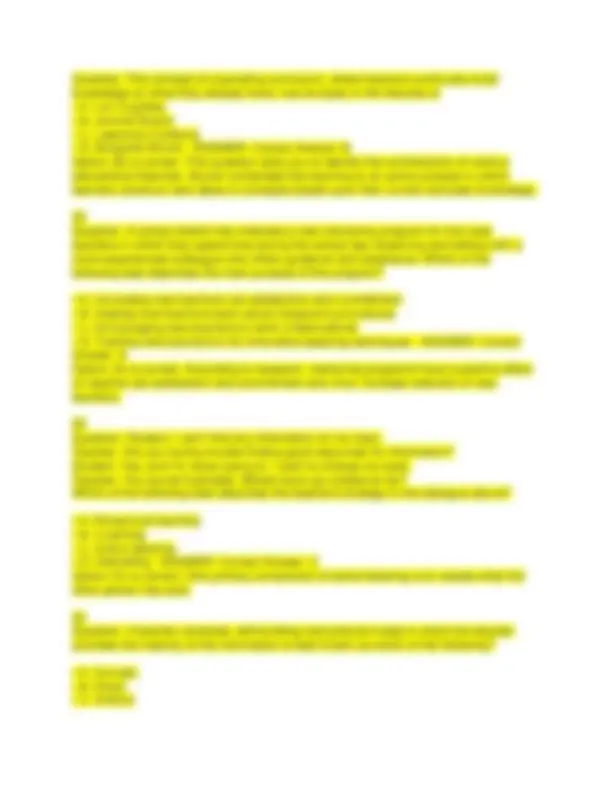
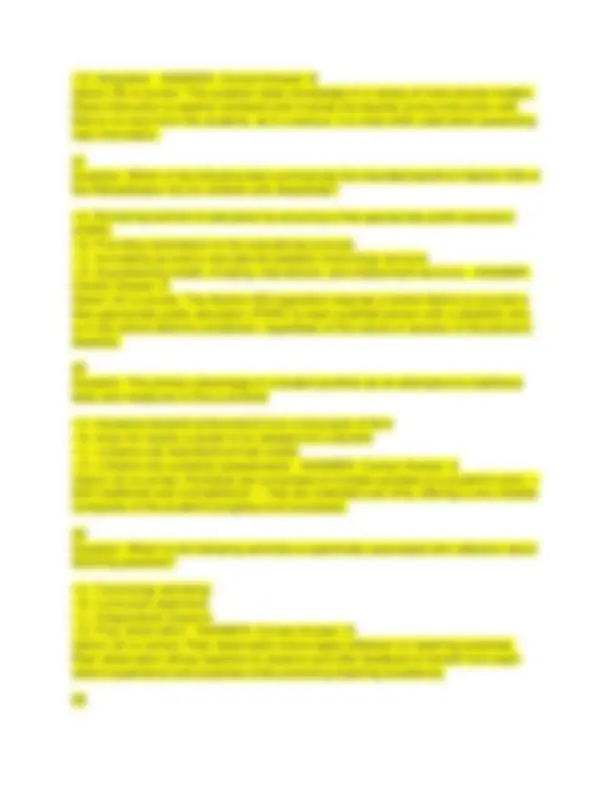
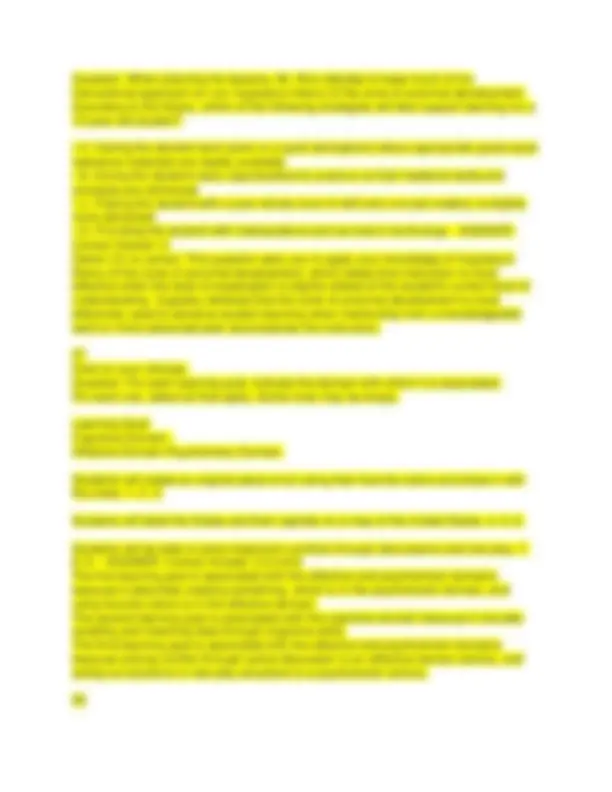
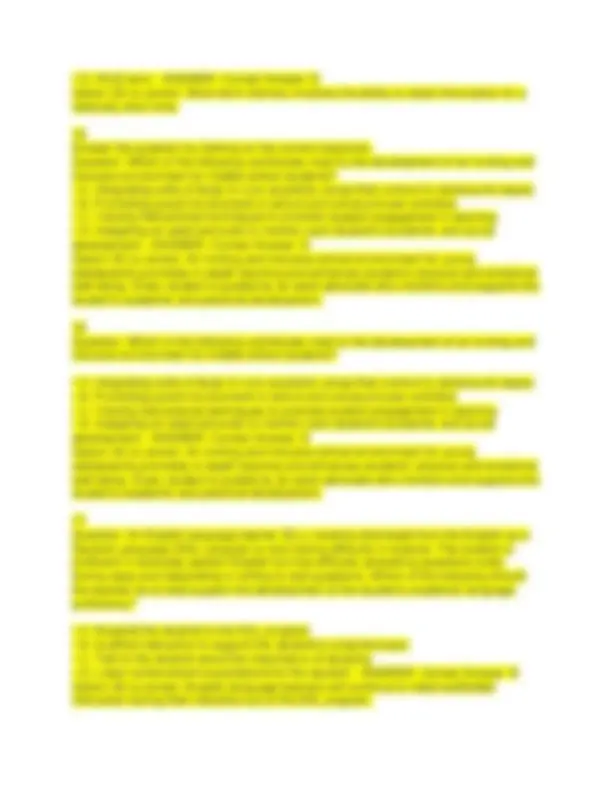
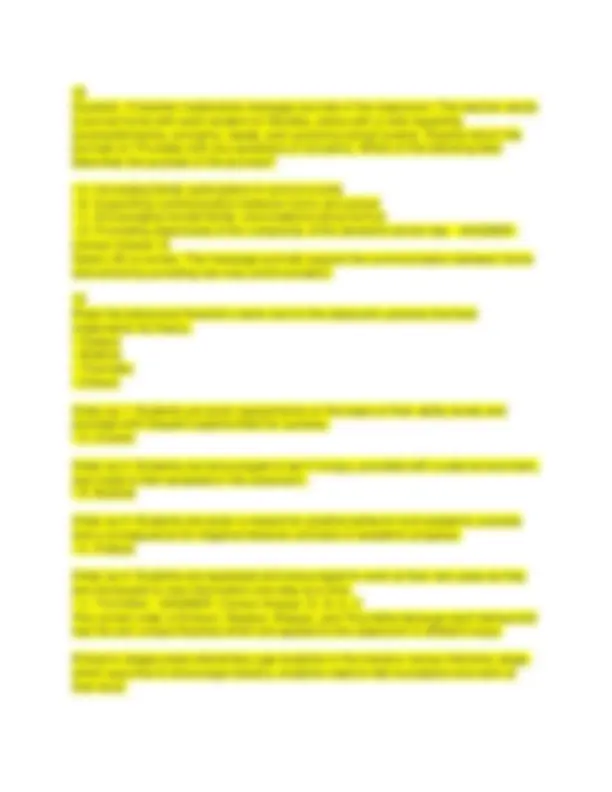
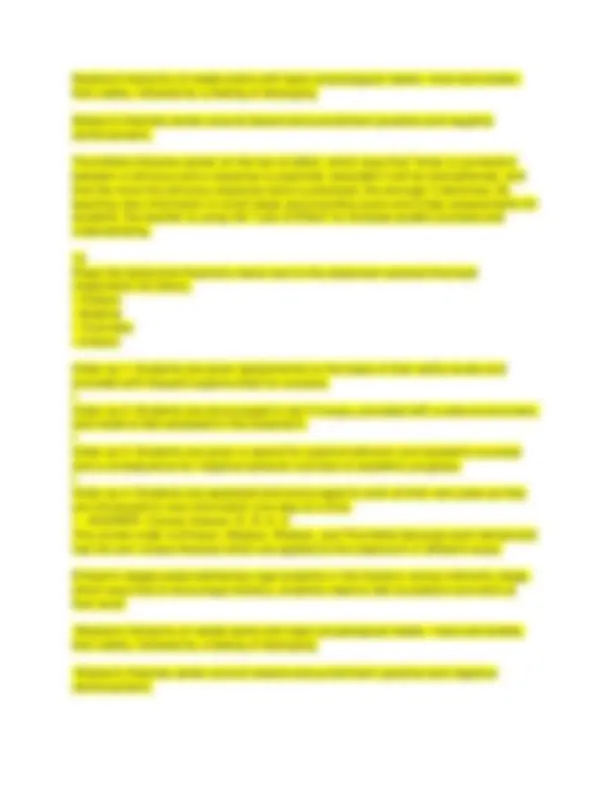
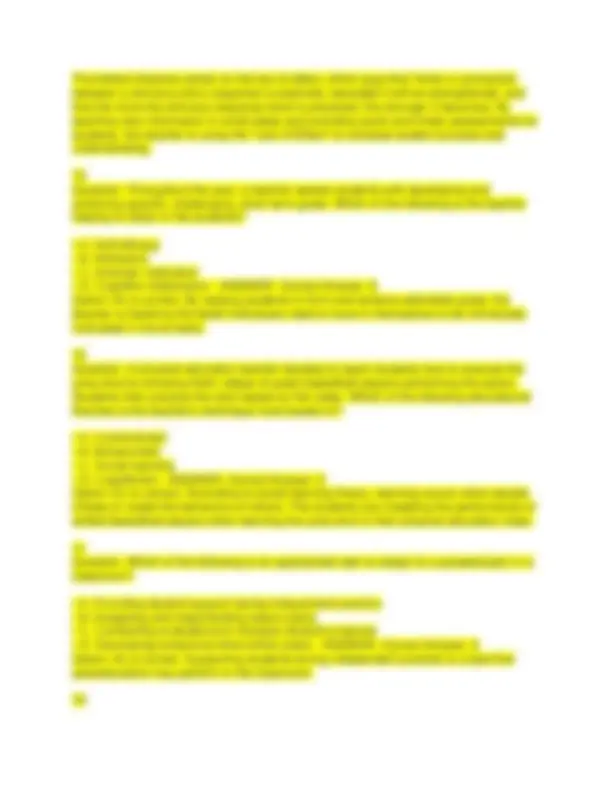
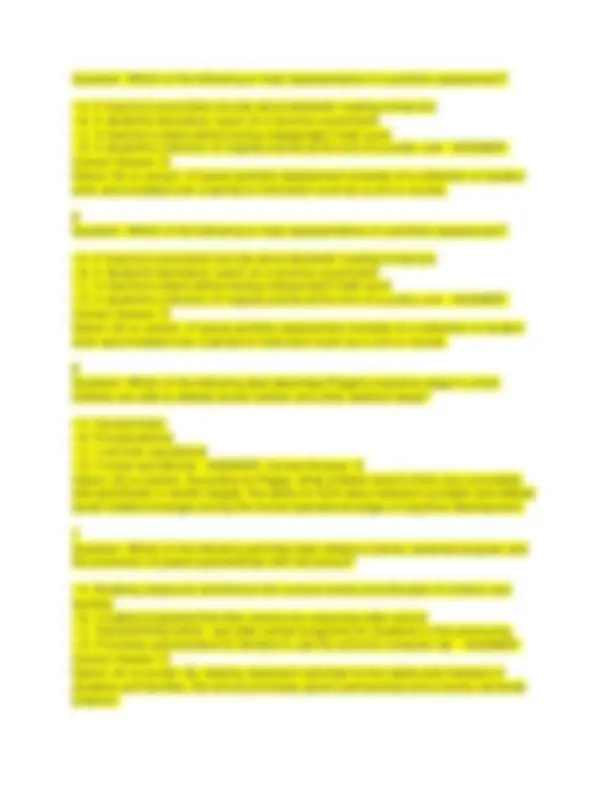
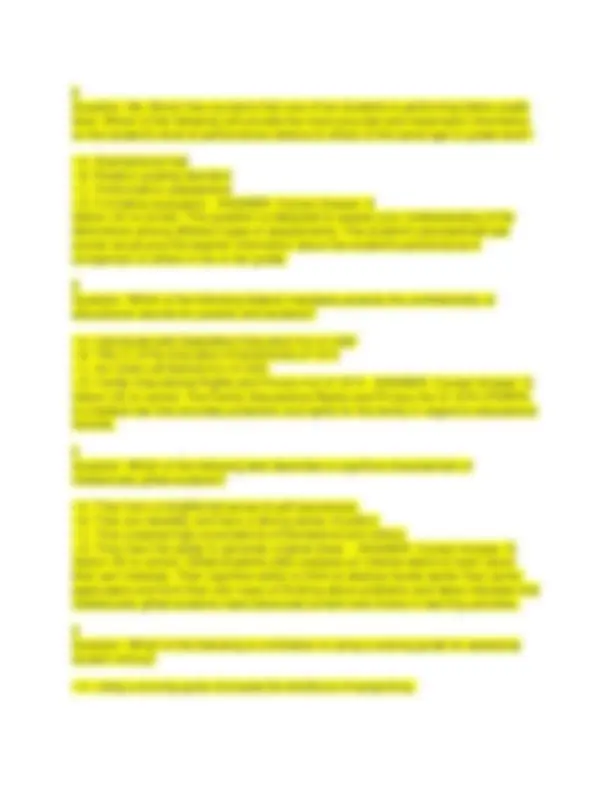
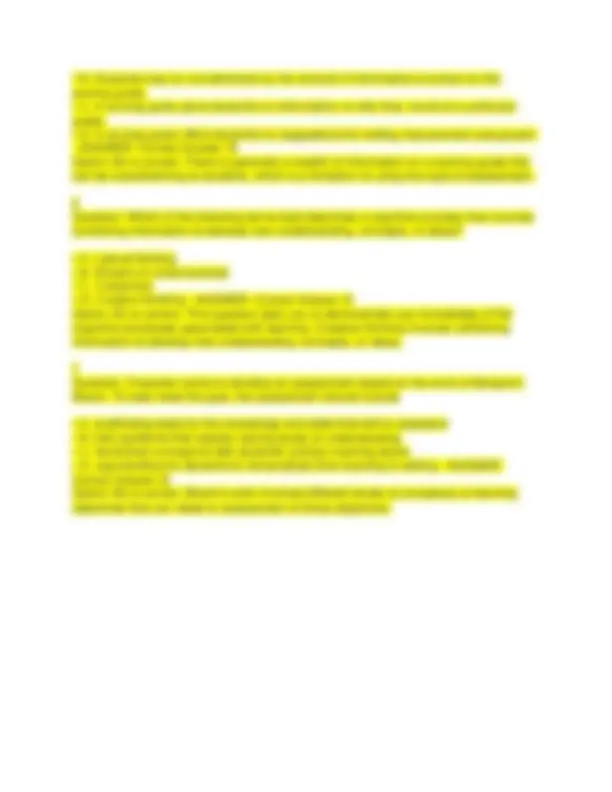



Study with the several resources on Docsity

Earn points by helping other students or get them with a premium plan


Prepare for your exams
Study with the several resources on Docsity

Earn points to download
Earn points by helping other students or get them with a premium plan
Community
Ask the community for help and clear up your study doubts
Discover the best universities in your country according to Docsity users
Free resources
Download our free guides on studying techniques, anxiety management strategies, and thesis advice from Docsity tutors
5623 Test Questions With 100% Correct Answers..pdf
Typology: Exams
1 / 25

This page cannot be seen from the preview
Don't miss anything!


















Question: Ms. Petra is presenting a lesson about the water cycle and has given each student a diagram to label. As she teaches, she moves toward a student named Tyler, who she notices is being inattentive. Without interrupting instruction, she points to the place on Tyler's diagram where he should be writing a label. Ms. Petra's actions can best be classified as an example of
Assessment 2 is criterion referenced. Criterion-referenced tests are often used to determine whether a student has obtained the expected knowledge and skills in a certain area and whether there are any gaps in learning. Assessment 3 is criterion referenced. Criterion-referenced tests are also used to evaluate the effectiveness of a course of study. 59 Question: Which of the following best identifies the process in which two equally experienced teachers provide each other with feedback, support, and assistance to improve teaching performance?
Question: Some gifted students have been integrated into a regular classroom. The teacher can most appropriately meet the needs of the gifted students by doing which of the following?
for involving the community. Which of the following describes the best first step for the teacher's action plan?
provide a foundation for defining the knowledge and skills students need in a given subject area. 43 Question: Mr. Rose wants to improve the quality of responses and the level of participation by students during class discussions. Which of the following techniques has the greatest potential for improving the thoughtfulness of students' responses and stimulating wider participation?
Option (A) is correct. Criterion-referenced tests are developed to assess knowledge and understanding of specified standards for learning particular content. 40 Question: A teacher wants to use copyrighted materials in class. For each row, select whether the action is allowed or prohibited under copyright laws. Statement: Allowed Prohibited A teacher makes 25 copies of a compilation of songs. Students practice the songs in class and perform them in the auditorium for parents. 1. 2. A teacher makes 25 copies of a short story from a book to be distributed to each student in the class. 3. 4. A teacher copies a poem to be displayed in class. Students discuss the poem in small groups. 5. 6. - ANSWER- Correct Answer: 2,3, The action described in the first statement is prohibited because under copyright laws, teachers may not make copies of music to be performed outside the classroom by students. The action described in the second statement is allowed because under copyright laws, teachers may make a reasonable amount of copies from a book for the purpose of teaching within the classroom environment only. The action described in the third statement is allowed because under copyright laws, teachers may display copyrighted material in distance learning as long as the material is relevant to the course of study, would typically have been displayed by the teacher, and is used only by those in the classroom. 39 Question: According to social learning theory, which of the following introductions to a spelling lesson is most likely to result in students' successful learning?
Question: The concept of a spiraling curriculum, where learners continually build knowledge on what they already know, has its basis in the theories of
Question: A high school English teacher wants to incorporate interactive message boards and other social media activities into an upcoming unit of study. Which of the following would be the best resource for helping the teacher develop the activities?
Question: Which of the following is the best example of a statement that is negatively intrinsic?
Question: A teacher implements message journals in the classroom. The teacher sends a journal home with each student on Monday, along with a note regarding accomplishments, concerns, needs, and upcoming school events. Parents return the journals on Thursday with any questions or concerns. Which of the following best describes the purpose of the journals?
Maslow's hierarchy of needs starts with basic physiological needs—food and shelter, then safety, followed by a feeling of belonging. Watson's theories center around reward and punishment (positive and negative reinforcement). Thorndike's theories center on the law of effect, which says that "when a connection between a stimulus and a response is positively rewarded it will be strengthened, and that the more the stimulus-response bond is practiced, the stronger it becomes. By teaching new information in small steps and providing quick and timely assessments for students, the teacher is using the "Law of Effect" to increase student success and understanding. 14 Place the behavioral theorist's name next to the classroom practice that best implements his theory.
Order as 2: Students are encouraged to eat if hungry, provided with a safe environment, and made to feel accepted in the classroom.
Order as 3: Students are given a reward for positive behavior and academic success and a consequence for negative behavior and lack of academic progress.
Order as 4: Students are assessed and encouraged to work at their own pace as they are introduced to new information one step at a time.